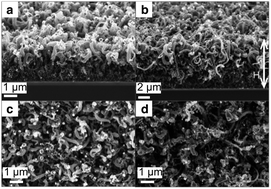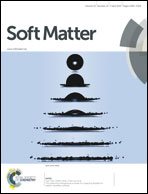The Leidenfrost temperature increase for impacting droplets on carbon-nanofiber surfaces
Abstract
Droplets impacting on a superheated surface can either exhibit a contact boiling regime, in which they make direct contact with the surface and boil violently, or a film boiling regime, in which they remain separated from the surface by their own vapor. The transition from the contact to the film boiling regime depends not only on the temperature of the surface and the kinetic energy of the droplet, but also on the size of the structures fabricated on the surface. Here we experimentally show that surfaces covered with carbon-nanofibers delay the transition to film boiling to much higher temperatures compared to smooth surfaces. We present physical arguments showing that, because of the small scale of the carbon fibers, they are cooled by the vapor flow just before the liquid impact, thus permitting contact boiling up to much higher temperatures than on smooth surfaces. We also show that as long as the impact is in the film boiling regime, the spreading factor of impacting droplets is consistent with the We3/10 scaling (with We being the Weber number) as predicted for large We by a scaling analysis.


 Please wait while we load your content...
Please wait while we load your content...